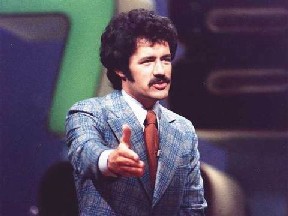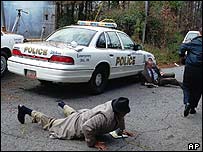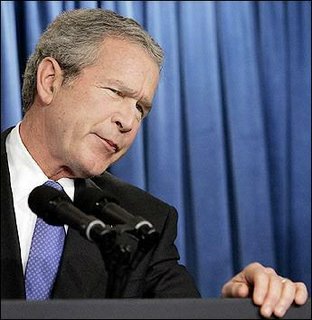 I know the film United 93 directed by Paul Greengrass opened in this area today, and based on what I’ve read from Steven Rea of the Inquirer, David Denby of The New Yorker and others, it is an expertly made film that captures the events leading up to the doomed flight that crashed in Shanksville, Pa. on September 11, 2001 (though the events themselves are subject to a bit more interpretation as far as I’m concerned).
I know the film United 93 directed by Paul Greengrass opened in this area today, and based on what I’ve read from Steven Rea of the Inquirer, David Denby of The New Yorker and others, it is an expertly made film that captures the events leading up to the doomed flight that crashed in Shanksville, Pa. on September 11, 2001 (though the events themselves are subject to a bit more interpretation as far as I’m concerned).And of course, the freeper brigade has been crying out in full force for everyone to see this movie. Kathryn Jean Lopez of The National Review beat the drum as loudly as she could, and Michael Smerconish over on The Huffington Post has been bleating over the fact that the judge in the Zacarias Moussaoui trial will not allow the tape of the plane’s final moments to ever be made public.
Lopez and Smerconish make me sick (to be honest, the main reason I linked to Smerconish’s post is so you could read the author get obliterated in the comments).
The goal of these individuals is to create and/or maintain a level of fear and outrage that will keep America unquestioningly subservient to Bushco and The Eternal, Forvever And Ever War On Terror That We Will Fight Without Ever Holding bin Laden Accountable, particularly given the fact that this is an election year and the polling numbers for the Republicans are so bad.
They don’t care about the families or the victims or honoring their memory in any way. It is all about politics.
Their goal is to score partisan points.
Period.
With this in mind, I’ve been reading some posts from this site, and it poses some questions that I thought were interesting.
According to the official story, the remains of people that were in or near the Flight 93 cockpit were found outside the crater, whereas all other passenger remains were found in the hole. BUT-- both types of remains were quite minimal-- they only found about 10% of the total possible remains from the known passengers. In other words, there should have been about 7000 pounds of body parts but they only found 700 pounds worth.Also, the “Flight 93 Hoax” site links to a great column written by Will Bunch that asks, among other things, how NORAD, the jet fighter squadron that should have intercepted the plane, apparently failed to do so (which was borne out, I suppose, by the flight recording). That by itself should warrant a congressional investigation.
Things that don't make sense:
1) That the front of the plane broke up while the rest of the plane went in the ground. By normal physical principles, either the nose went into the ground first followed by the fuselage or the plane didn't go into the ground period. I don't see any way around it. A good comparison would be with the planes crashing into the WTC: the nose didn't break off as the planes hit and broke through the wall-- the nose went in first. Moreover, the front of the plane smashing into bits should slow down the momentum of the plane quite a bit and thus it is not clear what drove the rest of the plane into the ground.
2) How did the front of the plane that supposedly didn't go into the ground break entirely into very small pieces? There wasn't even large sections of seats-- it's as if the front of the plane totally disintegrated. How would smashing into soft ground do this? Even an explosion doesn't rip everything into small unrecognizable pieces.
3) I can see bodies vaporizing to some degree if they were outside the crater and were subjected to the full force of the explosion and fire, but I don't understand why more intact bodies weren't recovered from the crumpled plane in the crater. What force shredded even these bodies to such an extreme degree?
4) What caused some debris from the plane to be found miles away? Some significant debris, including human remains and pieces of seats were found two miles away at Indian Lake.
Getting back to “Flight 93,” I should say that I am not trying to demean Paul Greengrass or his work. He is perfectly entitled to make what is apparently a great film.
I’m just saying that we don’t know all of the answers, and given the way the Bush Administration operates, I’m not sure that we ever will.
My sentiments were largely echoed pretty well by this opinion column that appeared in the Inquirer today:
Too much exploitation, too soonI’m not telling anyone not to see the film. I don’t have the right to do that. All I ask is that, if you do, you reserve a certain degree of skepticism knowing that this is one mystery that, to my mind, may never be completely solved.
There has been nowhere near enough time or resolution for movies to be made about 9/11.
By Tom Matthews
The movie United 93 opens today, but the early word is that it is not Pearl Harbor. Writer-director Paul Greengrass is a serious and respected filmmaker, and I believe this is a sincere attempt to dramatize the actions of those who died in the airliner brought down in a Pennsylvania field on Sept. 11, 2001. I also believe that is completely beside the point.
The dramatization of any event for commercial consumption is, by definition, exploitive regardless of the filmmaker's intentions. The reshaping of reality and the wholesale invention of "truth" when facts are not known (or convenient) are manipulations necessary to engage an audience. It is a common practice that has resulted in some of Hollywood's most glorious historical movies, but with a tragedy this fresh and this lacerating to the nation's psyche, it seems grotesque to me that we are already trying to reduce 9/11 to speculative melodrama.
What bothers me most about this movie and the numerous other 9/11 projects in the pipeline is what none of us likes to admit:
We are all slaves to our baser instincts. We are all inescapably drawn toward violence visited upon others, and the more gruesome the better. Look at the ghouls who flourish on the news networks, exploiting every grotesque rape and homicide for ratings. More important, look to the millions who tune in to watch.
There is no reason to think that 9/11 is any different. When newscasters recently warned their viewers of the impending graphic testimony aired in the Zacarias Moussaoui trial, many of us leaned in with a Pavlovian eagerness. When the judge first announced that recordings from the cockpit of Flight 93 would be shared with the jury but not the public, many of us were disappointed.
Even when we have the decency to turn away - which is what I have conditioned myself to do - we want to look. It's hardwired into us. And I know this is what is partially driving these movies.
If you're conflicted about seeing United 93, ask yourself this: What do you need to know about what happened that day, and what do you want to know? Much of what actually happened on that plane will never be known. What facts there are to be had have been disseminated, so your needs have long ago been met. That just leaves morbid curiosity:
What does it look like when a passenger gets her throat slashed? What does it feel like when a man calls his wife for the last time? What does it sound like when innocent people scream their way into the ground? Honestly, what other reason could there be for paying $8 to buy a ticket on this flight?
I clearly remember thinking on 9/11 that the only thing I could offer those people in their final, horror-stricken seconds of life was dignity. Even though they perished at the heart of a national calamity, I never felt it was my right to spy on their murders - not when they were being aired over, and over, and over again on television, and not now that they are being franchised for movie audiences.
In time, the right filmmaker with the necessary intelligence and sensitivity will yield a worthy account of the events of 9/11. But there has been nowhere near enough time or resolution for these movies to be made right now. If enough people stay home and keep United 93 from taking flight, Hollywood will know from the sting in its pocketbook that it has been premature in its rush to dramatize this particular horror story.
Tom Matthews is a screenwriter and novelist. He wrote the Costa-Gavras movie "Mad City" and the novel "Like We Care."











